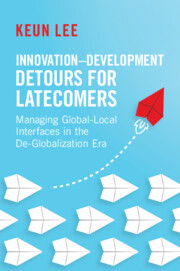 Innovation–Development Detours for Latecomers
Innovation–Development Detours for Latecomers Book contents
- Innovation–Development Detours for Latecomers
- Innovation–Development Detours for Latecomers
- Copyright page
- Contents
- Figures
- Tables
- Preface
- Abbreviations
- 1 Introduction
- 2 National Innovation Systems and Alternative Pathways for Latecomers
- 3 From Global–Local Interfaces to Local Value Added, Knowledge, and Ownership
- 4 Coevolution of Firms with Sectoral, Regional, and National Systems
- 5 Innovation–Development Detour in South Korea
- 6 The Roles of Government in Development Detours
- 7 Summary and Concluding Remarks
- References
- Index
- References
References
Published online by Cambridge University Press: 15 February 2024
- Innovation–Development Detours for Latecomers
- Innovation–Development Detours for Latecomers
- Copyright page
- Contents
- Figures
- Tables
- Preface
- Abbreviations
- 1 Introduction
- 2 National Innovation Systems and Alternative Pathways for Latecomers
- 3 From Global–Local Interfaces to Local Value Added, Knowledge, and Ownership
- 4 Coevolution of Firms with Sectoral, Regional, and National Systems
- 5 Innovation–Development Detour in South Korea
- 6 The Roles of Government in Development Detours
- 7 Summary and Concluding Remarks
- References
- Index
- References
Summary
- Type
- Chapter
- Information
- Innovation–Development Detours for LatecomersManaging Global-Local Interfaces in the De-Globalization Era, pp. 254 - 278Publisher: Cambridge University PressPrint publication year: 2024
- Creative Commons
- This content is Open Access and distributed under the terms of the Creative Commons Attribution licence CC-BY-NC 4.0 https://creativecommons.org/cclicenses/


